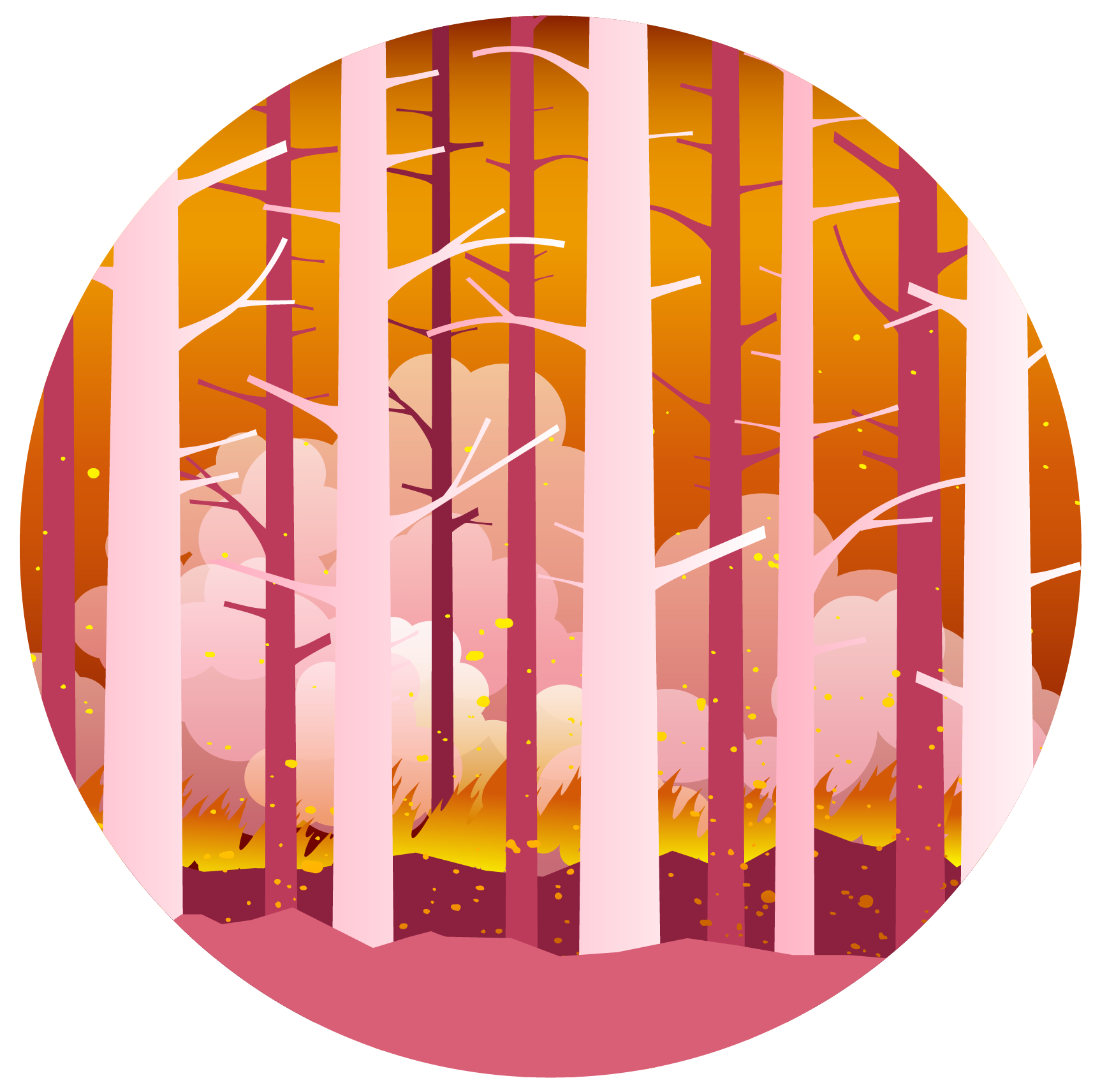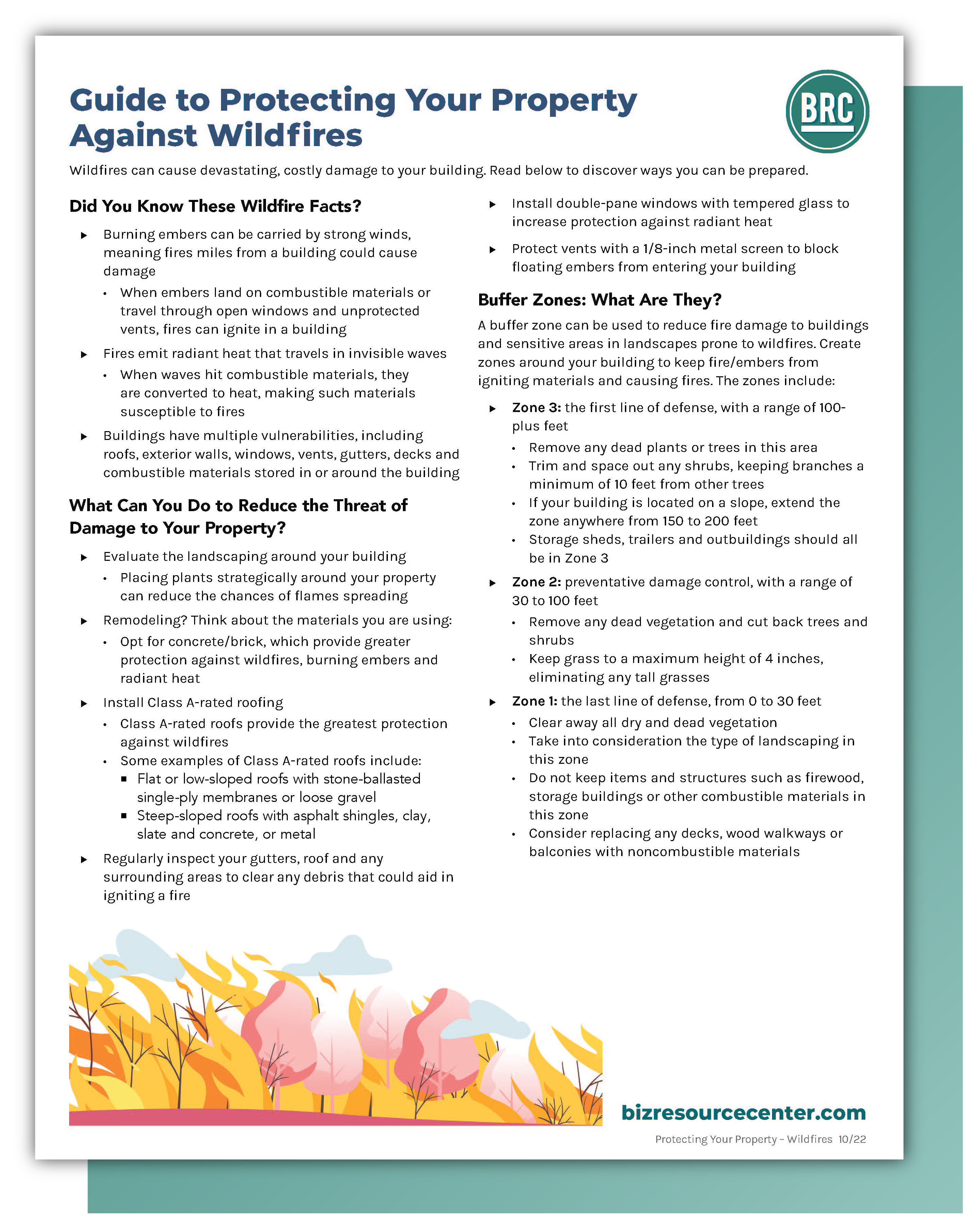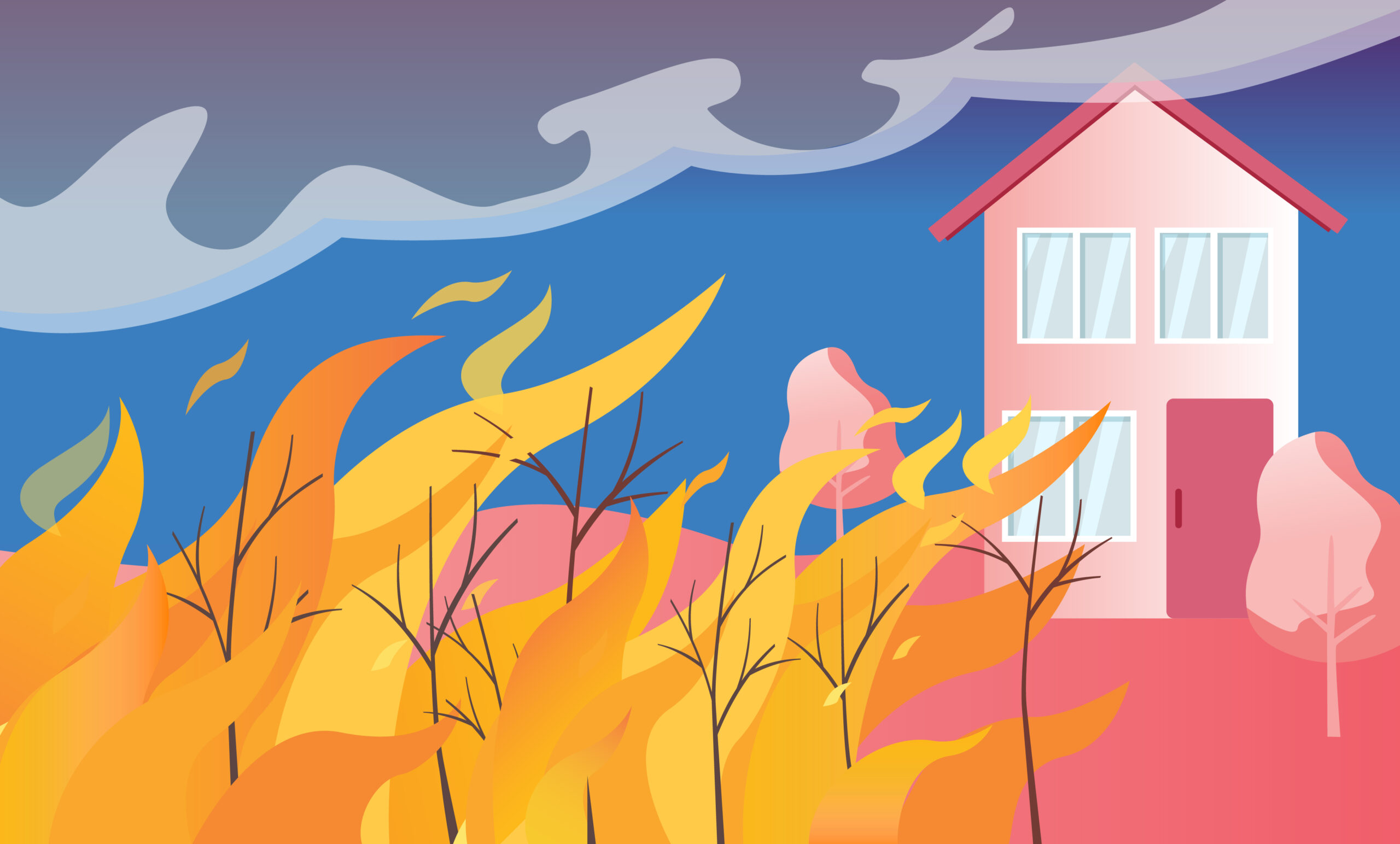Wildfires can cause devastating, costly damage to your building. Read below to discover ways you can be prepared.
Did You Know These Wildfire Facts?
- Burning embers can be carried by strong winds, meaning fires miles from a building could cause damage
- When embers land on combustible materials or travel through open windows and unprotected vents, fires can ignite in a building
- Fires emit radiant heat that travels in invisible waves
- When waves hit combustible materials, they are converted to heat, making such materials susceptible to fires
- Buildings have multiple vulnerabilities, including roofs, exterior walls, windows, vents, gutters, decks and combustible materials stored in or around the building

What Can You Do to Reduce the Threat of Damage to Your Property?
- Evaluate the landscaping around your building
- Placing plants strategically around your property can reduce the chances of flames spreading
- Remodeling? Think about the materials you are using:
- Opt for concrete/brick, which provide greater protection against wildfires, burning embers and radiant heat
- Install Class A-rated roofing
- Class A-rated roofs provide the greatest protection against wildfires
- Some examples of Class A-rated roofs include:
- Flat or low-sloped roofs with stone-ballasted single-ply membranes or loose gravel
- Steep-sloped roofs with asphalt shingles, clay, slate and concrete, or metal
- Regularly inspect your gutters, roof and any surrounding areas to clear any debris that could aid in igniting a fire
- Install double-pane windows with tempered glass to increase protection against radiant heat
- Protect vents with a 1/8-inch metal screen to block floating embers from entering your building
Buffer Zones: What Are They?
A buffer zone can be used to reduce fire damage to buildings and sensitive areas in landscapes prone to wildfires. Create zones around your building to keep fire/embers from igniting materials and causing fires. The zones include:
- Zone 3: the first line of defense, with a range of 100- plus feet
- Remove any dead plants or trees in this area
- Trim and space out any shrubs, keeping branches a minimum of 10 feet from other trees
- If your building is located on a slope, extend the zone anywhere from 150 to 200 feet
- Storage sheds, trailers and outbuildings should all be in Zone 3
- Zone 2: preventative damage control, with a range of 30 to 100 feet
- Remove any dead vegetation and cut back trees and shrubs
- Keep grass to a maximum height of 4 inches, eliminating any tall grasses
- Zone 1: the last line of defense, from 0 to 30 feet
- Clear away all dry and dead vegetation
- Take into consideration the type of landscaping in this zone
- Do not keep items and structures such as firewood, storage buildings or other combustible materials in this zone
- Consider replacing any decks, wood walkways or balconies with noncombustible materials

Download PDF version of this article.







